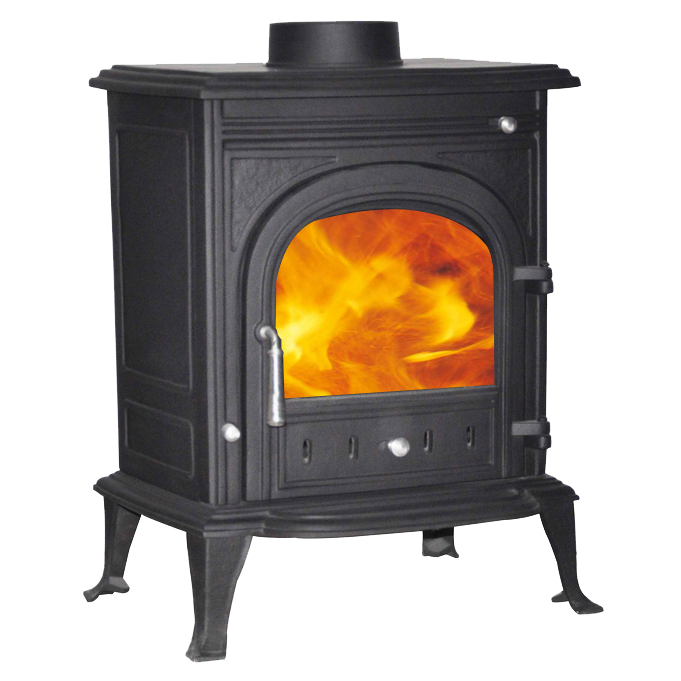Alpine wood burning stoves are becoming better in an environmental sense due to no small part of the amount of carbon dioxide released into the atmosphere being the same as that absorbed by the tree during growth.
It is also a renewable fuel source; this is most effectively so when wood is taken from cultivated woodland. When using your alpine wood burning stove, for the best results, we recommend logs that have been seasoned for 2 years or more. This will give you up to twice the output of freshly chopped timber and help prevent a build-up of tar in your alpine wood burning stoves flue.
Burning wood with advanced Alpine wood burning stoves, a stove that is CE certified makes the flames big and colourful; this makes a huge difference form the dark, ragged flames you would get in an open fireplace.
Not only do the advanced modern alpine wood burning stoves burn much cleaner and more efficiently than older conventional stoves, but the view of the flames are better to boot!
These are some of the benefits of upgrading to CE certified Alpine wood burning stoves, you can save wood (fuel), reduce smoke pollution and enjoy a great view all winter.
Carbon Benefits
The Forestry Commission (recognized by UK government) have begun steps to plant millions of trees to cover an extra targeted 4% of the UK in forest, this equals up to an estimated 29,000 football pitches, they are going to make this a yearly goal to create an increase of 16% the UK’s total land.
A recent study from the Solid Fuel Technology Institute said that logs are in fact the cheapest form of heating fuel. The cost per KW of fuel is now around 4p (estimate). The comparison is 5p for anthracite, 7p for gas, 8p for oil and 12p for electricity. Therefore Alpine wood burning stoves are a great environmental alternative to regular heating solutions.
